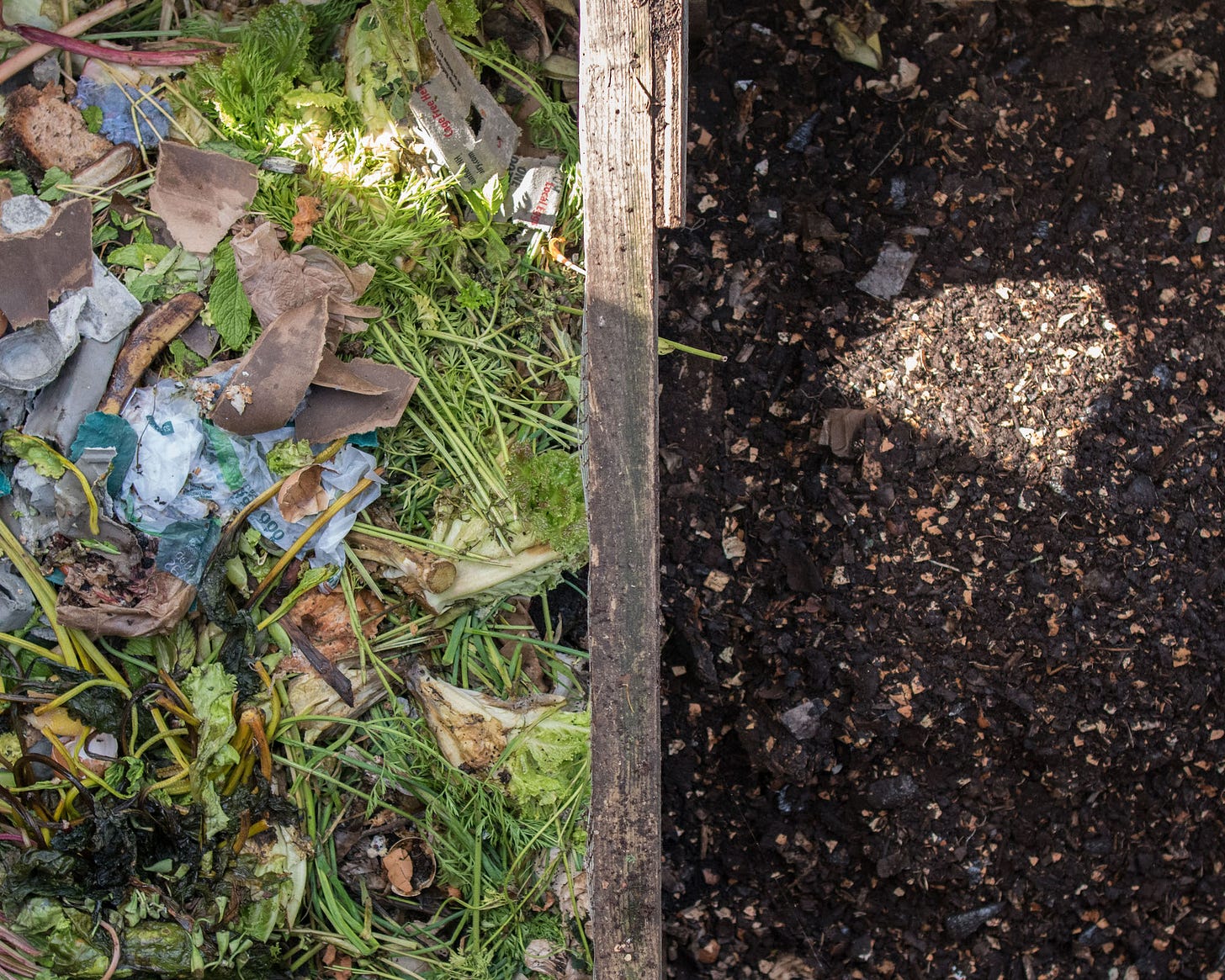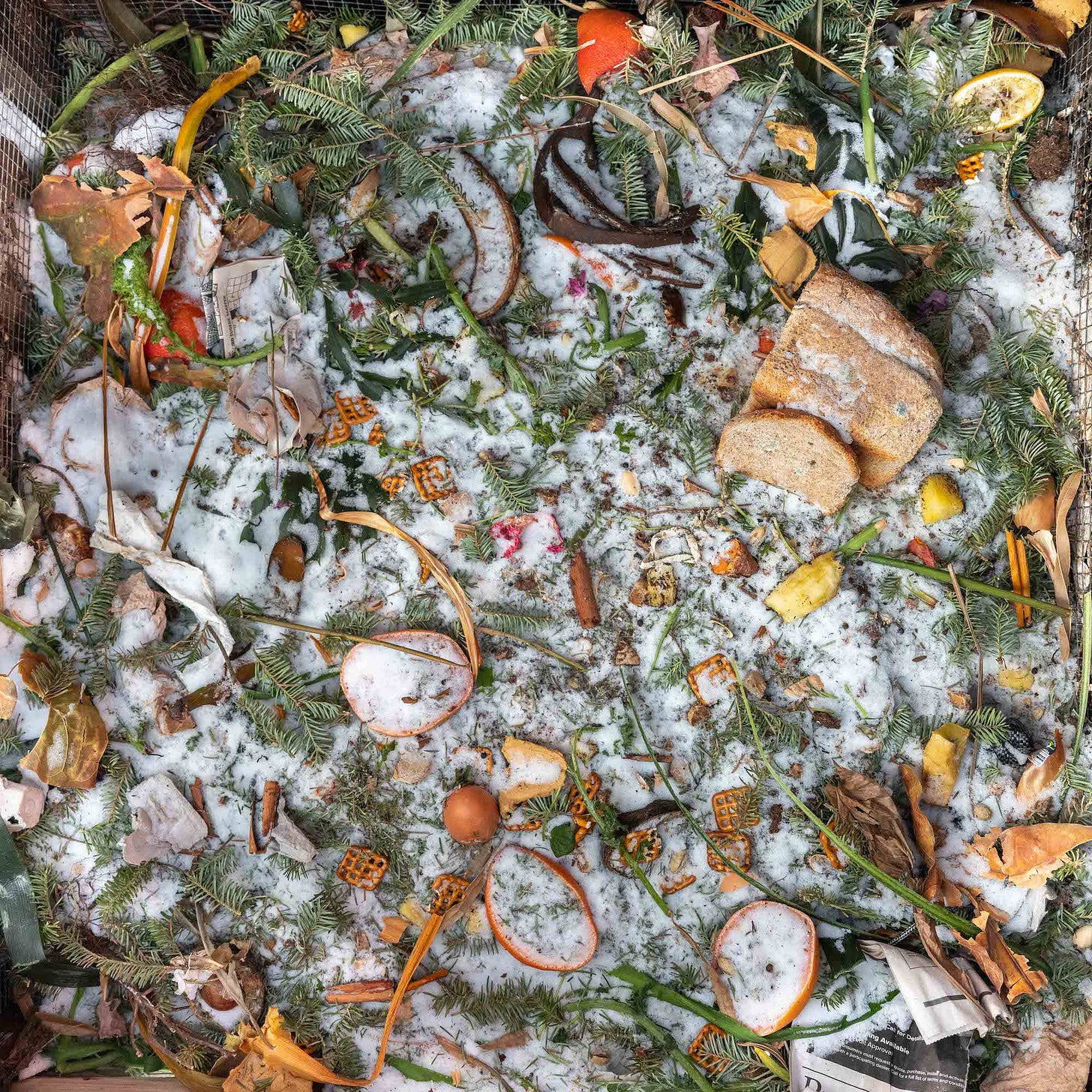Hello friends! Thank you for joining me for part 2 of The Origin Story.1
How can food waste be so beautiful? I am in awe of the kaleidoscope of nitrogen and carbon rich materials that nourish the soil and the soul.2
Before 2015, my obsession with compost was all about process - - what seemed the magical alchemy of materials and creatures (worms) that transformed scraps of food into useful nutrition for my garden.



I love that this weekly ‘chore’ impacted not just the waste stream (by diverting methane producing food scraps from the landfill) and my inner climate activist, but also my sense of personal equilibrium in uncertain times.3 Having struggled with anxiety my entire life, the ritual of composting provided ballast. It grounded me and offered solace through the deaths of my grandmother and niece, a failed attempt at teaching, and my mother’s decades-long relationship with cancer.
But it all changed when my daughter and I ate a bunch of pomegranates during an ice storm on January 4, 2015. When I dumped the detritus that remained onto the compost pile, this scene presented itself.
A four leaf clover…a shamrock…an act of god. I’d never seen such a colorful and textured design. What else does a photographer do, but run inside, grab her trusty Nikon and revel in the all of it.
And once you see something, you can’t unsee it; Once you start paying attention, it’s hard to stop. It wasn’t until I saw these apple peels in the fall of that same year, though, that I knew I was onto something. “It’s just so beautiful!” I would exclaim to family, friends and anyone who would listen. I was hooked.
The more committed I became to the practice of documenting the fresh detritus on our compost pile, the more the compost beckoned, inviting me to find beauty in the mess of it all.
And messy it was and continues to be! The election of 2016 threw me for a loop, but compost revealed that whatever rhetoric I heard on the news was just that - - rhetoric - - but what was happening in the compost bin was real, relevant and for me, extremely relatable.
So here we are, entering another election cycle, and I am grateful to return to these compost photographs for reassurance and inspiration. I hope you find them equally inspiring.
With compost kaleidoscopes, it’s all about the power of biodiversity and the need for balance. Left alone, each individual food scrap would take much longer to decompose, but when stirred together, they collaborate, breaking down and becoming soil.
The pile needs the all of it. We need the all of us.
So here’s the funny thing. I stopped documenting our compost pile ages ago,4 but I continue to see textured and nuanced kaleidoscopes of mixed and mingled materials wherever I go.



That, it seems, is the magic of photography - - once you start seeing a thing, you just can’t stop. 5
Compost became my muse for photography and my metaphor for, well, just about everything.
Like the maple leaf, and the pages from books in this image above. They are so much more than a few extra bits of carbon in the compost. Each item has meaning, connected to someone I love. Stay tuned. I’ll get into this more next week. Let’s just say that the themes I started last week, about mothers and compost, continue.
These compost ‘compositions’ are a journal of my life AND a celebration of the power of regeneration, transformation and renewal - - not just in the compost pile, but in our lives as well.
Thank you for spending time with me again this week.
With cheers and gratitude for you being you,
Lyn
If you weren’t here last week, here’s the link: 13 Tons of Love, Origin Story - Part 1
A healthy compost pile needs 30 parts carbon materials (dried leaves, sawdust, newspapers or toilet paper rolls) to 1 part nitrogen materials (your standard wet and mushy vegetable and other food scraps). The reason so many compost piles smell bad and are goopy messes is that they don’t contain enough carbon. Who knew?
While a single 10 pound bucket of food scraps can feel inconsequential, when I kept showing up on a regular basis for 13 years, I ultimately diverted 3.25 tons of methane producing garbage from the landfill!
After the bear incident in 2021 (more on that in last week’s newsletter), we now have a company collect a 5 gallon bucket of scraps from the top of our driveway every week.
Over the course of 6 years, I created more than 5,000 images of our food waste. I just couldn’t get enough. Over the past four years, I’ve been seeing kaleidoscopes of a different kind of waste at our local landfill. And most recently, I’ve been finding kaleidoscopes in the garden. So fun!















